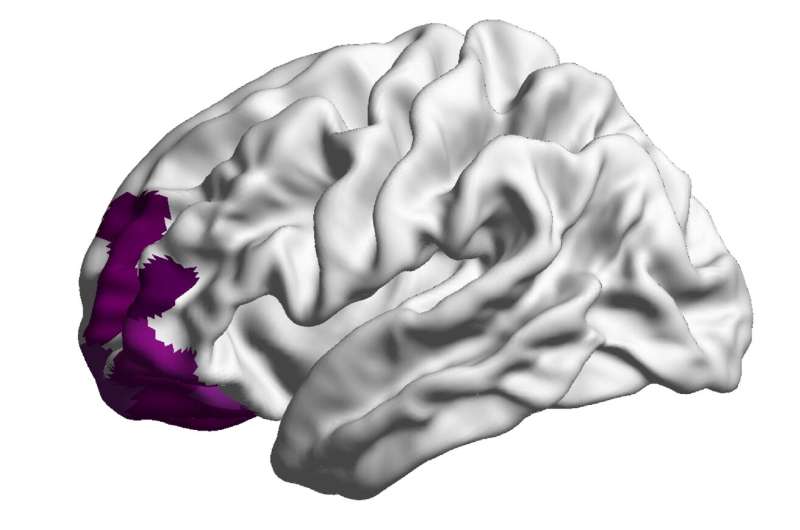This article has been reviewed according to Science X's editorial process and policies. Editors have highlighted the following attributes while ensuring the content's credibility:
fact-checked
peer-reviewed publication
trusted source
proofread
How adaptable to psychosocial stress is the teenage brain?

Mental illness often occurs for the first time during puberty and in young adulthood. This is because during adolescent brain development, a pronounced remodeling of cognitive networks takes place.
On the one hand, this remodeling promotes the maturation of more complex cognitive functions and the ability to fit into the social environment. On the other hand, this developmental phase may be associated with greater instability and susceptibility to negative environmental influences, which can affect the mental health of adolescents.
In a recent study published in the journal Nature Communications, Meike Hettwer and Sofie Valk from the Max Planck Institute for Human Cognitive and Brain Sciences in Leipzig and Forschungszentrum Jülich investigated how environmental risk factors—such as traumatic experiences and dysfunctional family settings—affect the mental health of 14- to 24-year-olds and how susceptibility to these factors can change within an individual over time.
The researchers used a publicly available dataset from Cambridge and London for their analysis. This included social factors such as parents' care for their children and friendship networks, as well as trauma. They looked at the mental health of more than 2,000 14- to 24-year-olds and linked this to myelination of the brain in a subgroup of 141 individuals.
Myelin is a whitish protective layer of proteins and fats that surrounds the projections of nerve cells and acts like a "glue" in the brain to ensure that signals can flow undisturbed from cell to cell. Myelination acts as a stabilizer that strengthens network connections as soon as they are established, but also as an insulator that allows information to be transmitted faster and more efficiently.
Over a longer period of time, the researchers monitored how adaptable the adolescents' brains were to psychosocial risk factors. To do this, the participants underwent two MRI scans, each one to two years apart.
"We looked specifically at changes in the extent to which stressors, e.g. familial neglect or bullying at school, affect the mental health of young people and how adaptable they are. What has changed in their brains over time that could be an advantage for their ability to adapt positively, that is, for their resilience?
"And the adolescents who became more resilient with age showed greater myelination in the prefrontal cortex. A central role of the prefrontal cortex for resilience in adolescents points to an intriguing connection between mental health and higher cognitive functions.
"This is because a more efficient maturation of prefrontal networks may be related to the fact that adolescents regulate their emotions better, assess situations more realistically, and develop cognitive strategies to better deal with emotionally challenging environments to find their own way," explains first author Meike Hettwer, Ph.D. student in Sofie Valk's research group at the MPI CBS and Heinrich Heine University Düsseldorf.
"In adolescents, who tend to become more susceptible to psychosocial stress with age, not so much has changed in terms of prefrontal myelination. We explain this by the fact that the more malleable the brain network is, the more vulnerable it is and the more susceptible it is to negative psychosocial influences from outside.
"We see that the increased stabilization through myelin also goes hand in hand with greater stability of the functional networks. Adolescents, who become more vulnerable with age, show less stability and more network changes."
Could the stability of networks in young people be promoted? Sofie Valk, last author of the study, says, "First of all, this study should be repeated in groups of adolescents with increased risk factors and in patients with manifest mental illness. It would be important to know whether our results can be replicated there.
"In general, it is important to know that resilience and vulnerability to psychosocial environmental risk factors show considerable individual differences, which are reflected in the dynamic structural and functional brain development. One of the main risk factors in adolescence is a challenging social environment—for example, bullying at school, abuse or neglect at home.
"The dynamic nature of myelin suggests a potential benefit of interventions targeting deviant trajectories in at-risk adolescents. Increased positive contact with supportive psychosocial services could promote the experience-dependent plasticity of the brain."
More information: Meike D. Hettwer et al, Longitudinal variation in resilient psychosocial functioning is associated with ongoing cortical myelination and functional reorganization during adolescence, Nature Communications (2024). DOI: 10.1038/s41467-024-50292-2



















